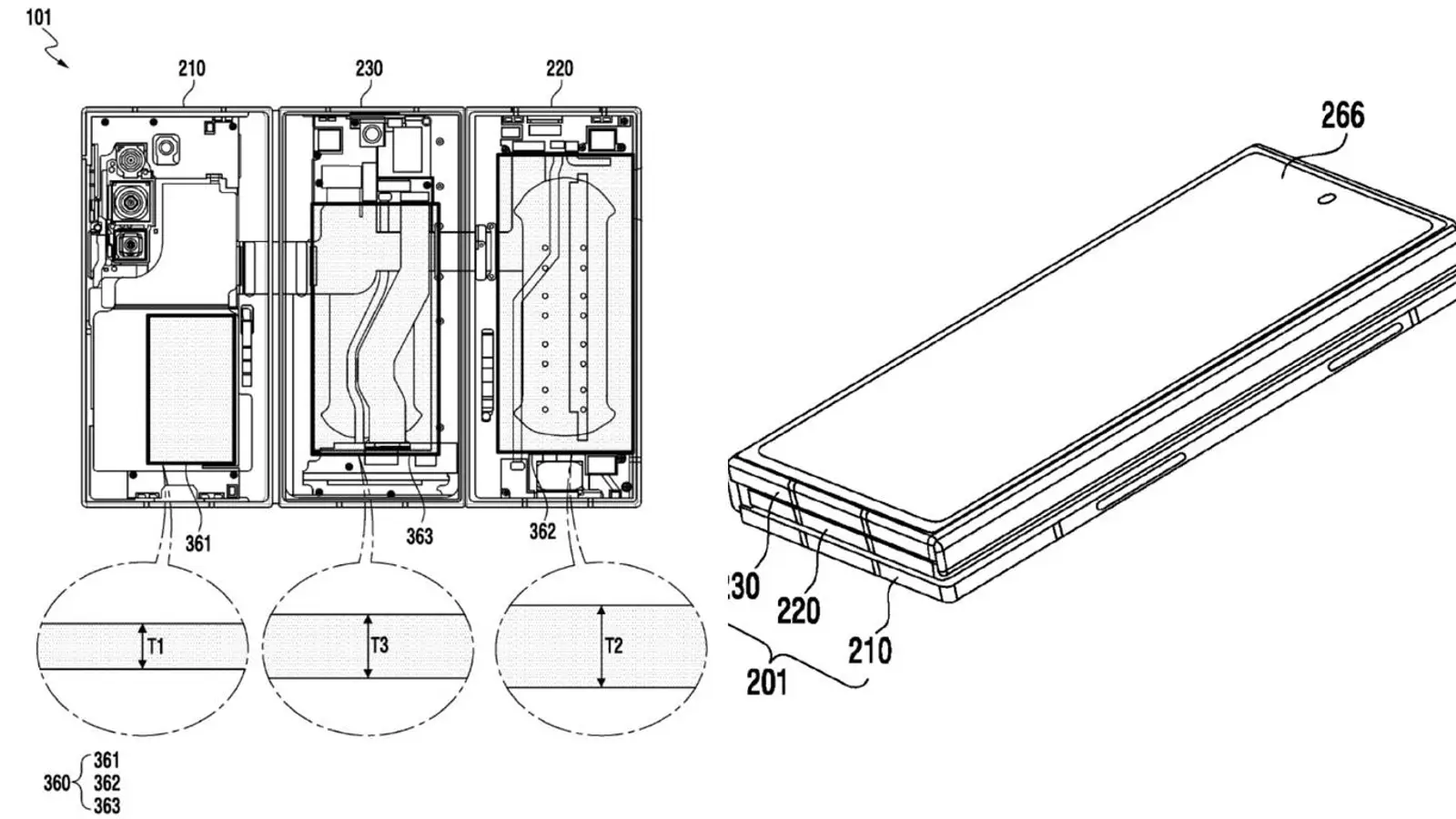Samsung Galaxy Z TriFold teased in patent: tri-fold phone with three batteries
Patent hints at Samsung's Galaxy Z TriFold with three batteries, Snapdragon 8 Elite, up to 16 GB RAM and a 10-inch AMOLED, launching as soon as late October.
Patent hints at Samsung's Galaxy Z TriFold with three batteries, Snapdragon 8 Elite, up to 16 GB RAM and a 10-inch AMOLED, launching as soon as late October.

© KIPRIS
Samsung is preparing to launch a new experimental smartphone, the Galaxy Z TriFold, as indicated by a fresh patent application published by KIPRIS. Judging by the drawings, the device resembles an enlarged Galaxy Z Fold 7, but its architecture is entirely different, built around three separate batteries. Each of the foldable’s three sections carries its own cell: the smallest sits in the camera block, a mid-sized unit lives beneath the outer display, and the largest is housed in the central panel, which ends up sandwiched between the others when folded.
While the documents don’t disclose exact capacities or charging speeds, the schematics point to a carefully planned power distribution that could yield longer battery life than today’s foldables. The approach underscores Samsung’s appetite for bold engineering beyond familiar form factors, and on paper the three-cell layout looks like a pragmatic way to squeeze more endurance out of a complex design.
Rumors suggest the Galaxy Z TriFold will use a Snapdragon 8 Elite chip, offer up to 16 GB of RAM, and feature a 200 MP main camera, a 12 MP ultrawide, and a 50 MP telephoto lens with 5x optical zoom. The Dynamic AMOLED 2X display stands out in particular: roughly 10 inches across with a wide aspect ratio, it turns the phone into something close to a full-fledged tablet when unfolded.
An official announcement could arrive as early as late October. However, as with the Galaxy Z Fold SE, sales will likely be limited to a handful of markets, with South Korea and China among them. If the leaks hold, the Galaxy Z TriFold may become one of the year’s most unusual mobile gadgets—evidence that Samsung is still probing new shapes for the future of mobile devices.